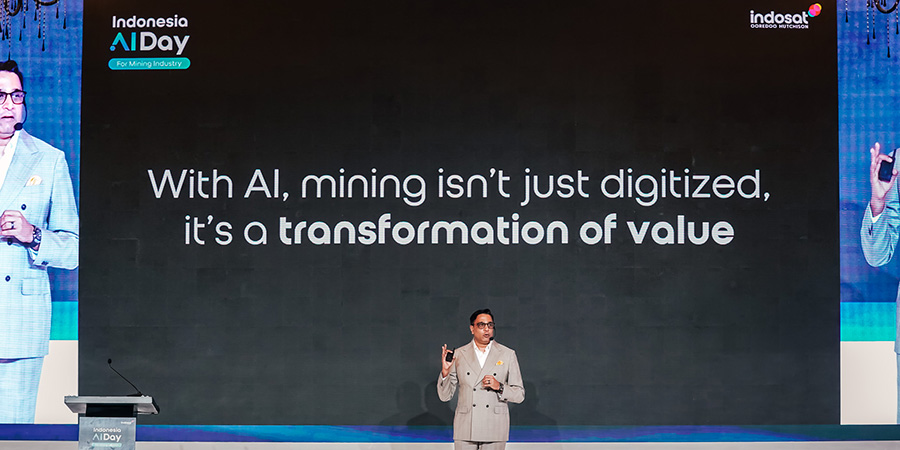Mobile networks are no longer confined to their traditional role in telecommunications; across Asia, they are emerging as powerful engines of innovation, catalyzing breakthroughs in industries such as healthcare, manufacturing, agriculture, and finance.
With 5G deployment picking up pace and 6G already on the horizon, mobile networks are laying the digital rails for the next era of interconnected, intelligent systems.
From real-time surgical procedures enabled by ultra-low latency to smart factories leveraging automation and artificial intelligence (AI), mobile networks are at the heart of this transformation. This impact is profound in the Asia Pacific, where a fast-growing digital economy is fueling inclusive growth.
A Backbone for Industrial Reinvention
Mobile networks are becoming the nervous system of modern economies. With the roll-out of 5G, and the anticipated shift toward 5G-Advanced (also referred to as 5.5G), industries are gaining access to capabilities that were once purely aspirational. This includes near-instant communication, massive machine-type connections (mMTC), and reliable, secure networks that can support mission-critical applications.
In manufacturing hubs like Japan, South Korea, and parts of Southeast Asia, smart factories powered by mobile-connected sensors and robotics are boosting efficiency and precision. Thailand witnessed a landmark collaboration as ZTE, TrueBusiness, and Charoen Pokphand Foods (CPF) transformed the country’s manufacturing sector with smart factory deployments, leveraging 5G to streamline operations and drive productivity. This was echoed in Vietnam, where Viettel, in partnership with Qualcomm, launched the country’s first commercial Open RAN 5G network, emphasizing openness, vendor diversity, and cost-effective scaling.
Meanwhile, in rural communities across countries like India and Indonesia, 5G-enabled Internet of Things (IoT) devices are supporting precision farming, helping farmers monitor soil conditions, track crop health, and optimize water use.
In the healthcare sector, remote patient monitoring, telemedicine, and even AI-assisted diagnostics are becoming viable through stable, high-speed mobile connectivity. The ability to deliver these services reliably, and in real time, is particularly valuable in countries with large rural populations and limited access to healthcare facilities.
In 2024, mobile network operators (MNOs) across Asia laid the foundation for industrial reinvention. Nokia and IOH (Indosat Ooredoo Hutchison) extended their long-standing partnership to accelerate the rollout of 4G and 5G networks in Indonesia, reinforcing the nation’s digital infrastructure. In Malaysia, Telekom Malaysia supported the government’s bold shift to a 5G dual network model, paving the way for broader access and increased market competitiveness.
In South Korea, KT integrated AI systems into its operations, ushering in next-gen autonomous network management, enhancing both efficiency and responsiveness. Meanwhile, BBIX selected Nokia to upgrade its backbone infrastructure with 400GE technology, boosting capacity to support data-intensive services across East Asia.
Rounding out the regional push, U Mobile embarked on an ambitious rollout of thousands of 5G sites across Malaysia, marking a major milestone in national digital transformation and innovation for enterprises and consumers alike.
Interesting Read: Redefining Global Benchmarks: China Mobile and Huawei on the Power of 5G-A and AI
More Than Speed
Although 5G is still gaining ground, the conversation around 6G is already taking shape. This next-generation technology promises to enhance everything 5G offers—faster speeds, lower latency, and more efficient energy use—while presenting entirely new frontiers, such as holographic communication, advanced mixed-reality experiences, and ubiquitous connectivity powered by AI.
In this context, 5G-Advanced serves as a stepping stone. It will introduce enhanced network slicing capabilities, energy-saving features, and improved support for edge computing.
Elaborating on this at the 2024 Mobile Broadband Forum, Wasit Wattanasap, Head of Nationwide Operations and Support Business Unit, AIS, explained that, “AIS’s Care Growth strategy focuses on creating a ‘Living Network’ that adapts in real time to customer needs, offering on-demand 5G services powered by AI and machine learning (ML).”
By analyzing user behavior, network conditions, and service quality in real time, the network can automatically adjust to optimize experiences, such as prioritizing bandwidth for high-value users or enhancing quality for streaming and gaming.
These upgrades are crucial for more complex applications such as autonomous vehicles (AVs), remote-controlled drones, and AI-driven logistics, all of which require ultra-reliable performance and real-time decision-making capabilities.
Collaboration and Open Innovation
The driving force behind this rapid evolution is not only technology; it’s also collaboration. Across Asia, mobile operators, tech developers, governments, and international alliances are working together to build open, secure, and scalable infrastructure.
Australia’s remote communities are experiencing enhanced connectivity through satellite broadband, while Aussie Broadband and Optus have deepened their partnership to enhance national coverage.
In Southeast Asia, CelcomDigi is pioneering AI-powered autonomous network operations, setting a new benchmark for self-optimizing systems.
Meanwhile, Northeast Asia is seeing radical innovation. NTT, DOCOMO, and NEC recently achieved a record 140 Gbps wireless transmission using orbital angular momentum (OAM), indicating a leap in bandwidth capabilities. SoftBank’s AI-powered large telecom model is bolstering Japan’s AI-native networks.
Moreover, NEC’s near-real-time RAN controller is being used to equip radio access networks with intelligent capabilities, and HFR mobile’s private 5G safety network in Korea is showcasing how custom 5G solutions can serve mission-critical applications. In India, Vodafone Idea’s 5G rollout in Mumbai marks a pivotal step toward urban, ultra-fast connectivity.
From a regulatory perspective, initiatives like the Open Gateway framework, which enables developers to access network capabilities via standardized application programming interfaces (APIs), is creating a dynamic ecosystem where new services can be rapidly developed and deployed across borders.
Standardization is also key. Efforts to harmonize spectrum allocation and network equipment standards are helping ensure that technological progress isn’t siloed within national boundaries but shared across the region.
Dr. Cosmas Zavazava, Director of the Telecommunication Development Bureau (BDT) at the International Telecommunication Union (ITU), explained that the “ITU also organizes the Digital Transformation Dialogues, a series of webinars, fireside chats, and ask-the-expert sessions on emerging technologies. These dialogues are a place for cities to share knowledge, identify policy needs, and develop international standards that support digital transformation.”
Our ITU-T Study Group 20 develops international standards (ITU-T recommendations) that provide guidance for implementing IoT technologies, city services, policy frameworks, and more.
Addressing Security in a Hyper-Connected World
As connectivity increases, so too does responsibility. Similarly, as networks become more complex and integrated with critical services, cybersecurity has become a top priority. Advanced threats now target both devices and networks, exploiting virtualized infrastructure and real-time data flows.
In response, operators and regulators are adopting a zero-trust approach, whereby no user or device is automatically trusted, and continuous authentication is required at every layer. There’s also a rising interest in quantum-safe encryption and AI-powered threat detection tools.
Foundation for Economic Growth
At its core, this transformation encompasses more than just faster internet; it serves as the foundation for sustainable, inclusive economic growth. According to the GSM Association’s (GSMA) Mobile Economy Asia Pacific 2024 report, the mobile industry is expected to contribute over USD 1 trillion to the Asia Pacific economy by 2030. This growth is projected to outpace the global average, driven by the region’s accelerated adoption of 5G technologies.
To fully realize this potential, ongoing investment in infrastructure, policy support, and skills development will be essential. Public-private partnerships will play a critical role, especially in ensuring that rural and underserved areas aren’t left behind.
Asia’s mobile networks are becoming far more than connectivity providers; they are platforms for innovation, collaboration, and progress. As the region moves from 5G to 6G and beyond, the focus must remain on enabling meaningful, secure, and inclusive digital transformation. The promise is vast , yet requires a collective commitment to innovation, ethics, and resilience. If implemented correctly, mobile networks could be the cornerstone of Asia’s next great leap forward.
Exclusive Interview: Money Goes Mobile: Asia Embraces Digital Transactions












